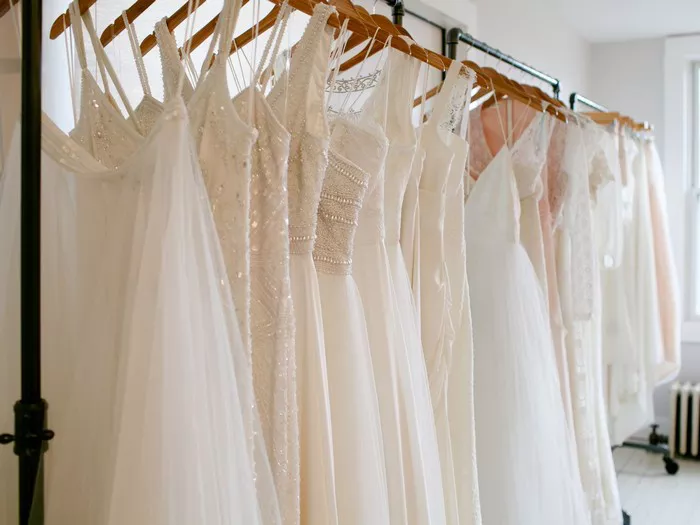The wedding industry is experiencing a green revolution, and nowhere is this more evident than in the realm of sustainable wedding attire. As environmental awareness grows, couples are increasingly seeking eco-friendly options for their wedding wardrobe—from dresses and suits to accessories and shoes. This shift is transforming bridal fashion at every level, from high-end designers to mass-market retailers, as the industry responds to demand for beautiful yet responsible wedding attire.
Traditional wedding attire has historically been one of the least sustainable elements of a wedding. The average wedding dress requires significant resources to produce and is typically worn only once before being preserved or discarded. Groom’s attire often follows a similar single-use pattern. Recognizing this environmental impact, eco-conscious couples are pioneering alternative approaches that reduce waste without sacrificing style. The sustainable wedding attire movement encompasses various strategies, including renting, buying secondhand, choosing ethically made new pieces, and even creating DIY wedding outfits.
The secondhand wedding dress market has exploded in popularity, with specialized platforms making it easier than ever to find pre-loved gowns in excellent condition. Many brides appreciate not only the environmental benefits but also the cost savings—high-quality designer dresses can often be purchased secondhand for a fraction of their original price. Some boutiques now specialize in curated collections of pre-owned wedding dresses, offering professional cleaning and alteration services to ensure each gown looks its best. Vintage wedding dresses from specific eras have become particularly sought-after, offering unique style while giving beautiful garments a second life.
Rental services for wedding attire are another sustainable option gaining traction. Several companies now offer designer wedding dress rentals with various price points and style options. The rental model makes particular sense for groom’s attire, as high-quality suits and tuxedos can be rented for a fraction of purchase price while being worn many times by different users. Some rental companies even offer subscription services that provide multiple outfit options for wedding weekends that include several events. This approach significantly reduces the environmental impact per wear while allowing couples to don designer pieces they might not otherwise afford.
For those preferring new wedding attire, a growing number of designers specialize in eco-friendly creations. These designers use sustainable fabrics like organic cotton, hemp, peace silk (harvested without harming silkworms), and even innovative materials made from recycled plastics or plant-based fibers. Low-impact dyes, ethical production practices, and fair labor conditions are hallmarks of these brands. Some go further by implementing zero-waste pattern cutting techniques or offering take-back programs to recycle garments after use. While still a niche market, sustainable bridal designers are gaining recognition for combining environmental responsibility with high fashion.
The concept of rewearing wedding attire is becoming more socially acceptable, further supporting sustainability. Many modern couples choose outfits that can be altered or restyled for other formal occasions after the wedding. A wedding dress might be shortened into a cocktail dress, or a suit might become part of a professional wardrobe. Some brides opt for non-traditional colors specifically so their dress can be reworn more easily. This shift reflects changing attitudes about wedding attire—from sacred relic to beautiful garment meant to be enjoyed multiple times.
Accessories and shoes are also part of the sustainable wedding attire equation. Many couples now seek out vintage or handmade jewelry, repurpose family heirlooms, or choose pieces made from recycled metals and ethically sourced stones. Sustainable shoe options include vegan leather, recycled materials, or classic styles that will remain fashionable for years. Even small choices like selecting a vintage veil or borrowing a hairpiece rather than buying new contribute to reducing the wedding’s environmental footprint.
The environmental impact of wedding attire extends beyond the outfits themselves to cleaning and preservation. Traditional dry cleaning methods often use harsh chemicals, prompting eco-conscious couples to seek out green cleaning alternatives. Some opt to skip conventional preservation (which typically involves plastic wrapping) in favor of careful storage in breathable materials. Others choose to have their wedding attire professionally cleaned and donated after use, creating a sustainable full cycle for the garment.
Cultural traditions are blending beautifully with sustainable wedding attire practices. Many cultures have long-standing traditions of rewearing or repurposing wedding garments that align perfectly with modern sustainability values. A Chinese qun kwa might be passed down through generations, or an Indian lehenga might be restyled for different occasions. Western couples are increasingly drawing inspiration from these traditions, viewing wedding attire as an investment rather than a single-use item.
The business of wedding attire is adapting to these sustainable trends. Major bridal retailers are introducing eco-conscious collections and implementing recycling programs. Designers are highlighting their sustainable practices as selling points. Even wedding insurance providers are beginning to offer coverage for rented or secondhand wedding attire, removing barriers to these more sustainable choices.
Looking ahead, sustainable wedding attire will likely become the norm rather than the exception. As fabric technology advances, we’ll see more innovative eco-friendly materials that don’t compromise on luxury or aesthetics. The circular economy model—where garments are designed to be reused, recycled, or biodegraded—will become standard in bridal fashion. Most importantly, the stigma around non-traditional approaches to wedding attire will continue to fade, making sustainable choices accessible and appealing to all couples.
Ultimately, sustainable wedding attire represents more than just an environmental choice—it’s a meaningful way for couples to align their wedding with their values. By carefully considering the impact of their wedding wardrobe, modern couples are proving that style and sustainability can walk down the aisle hand in hand, creating beautiful memories without leaving a heavy footprint on the planet.


